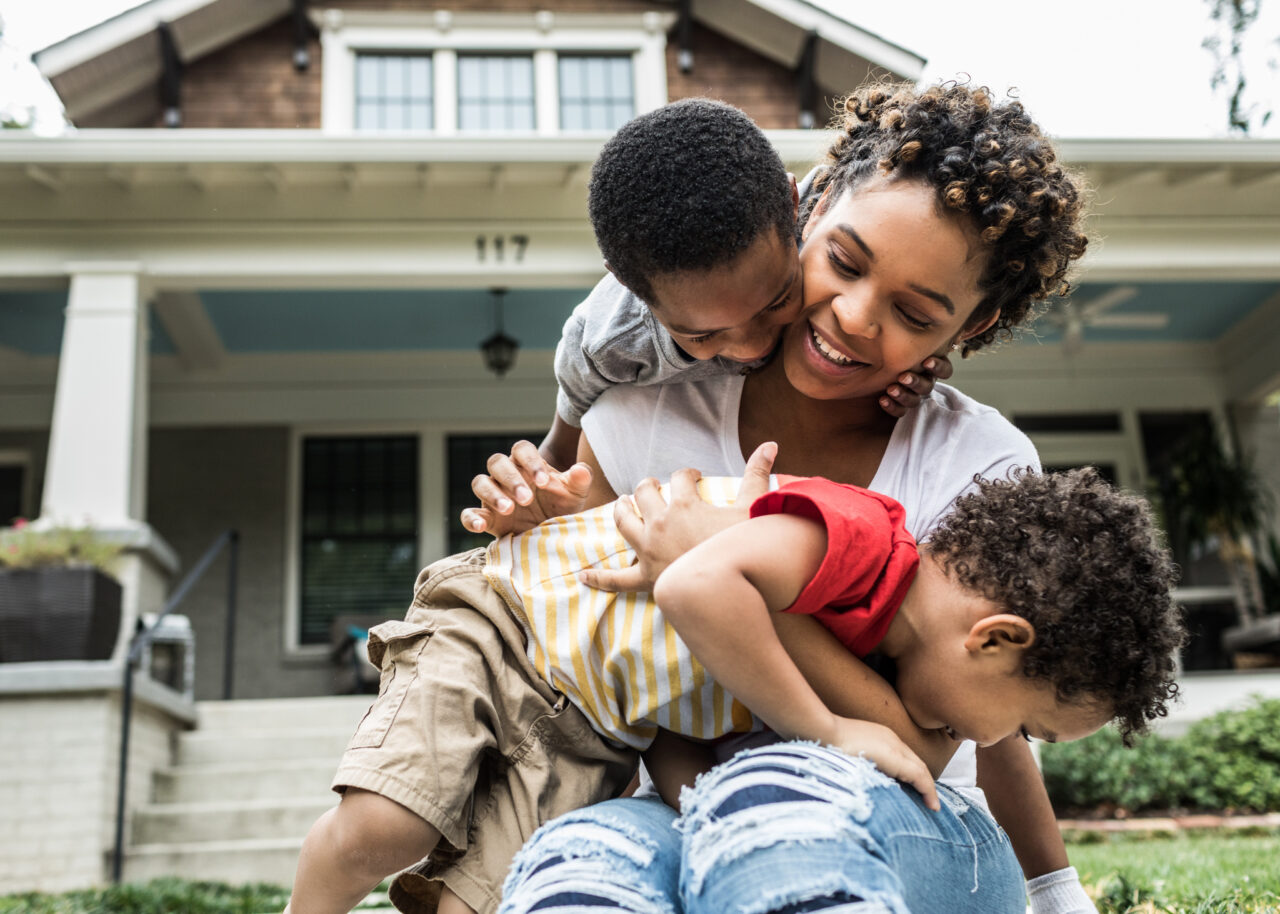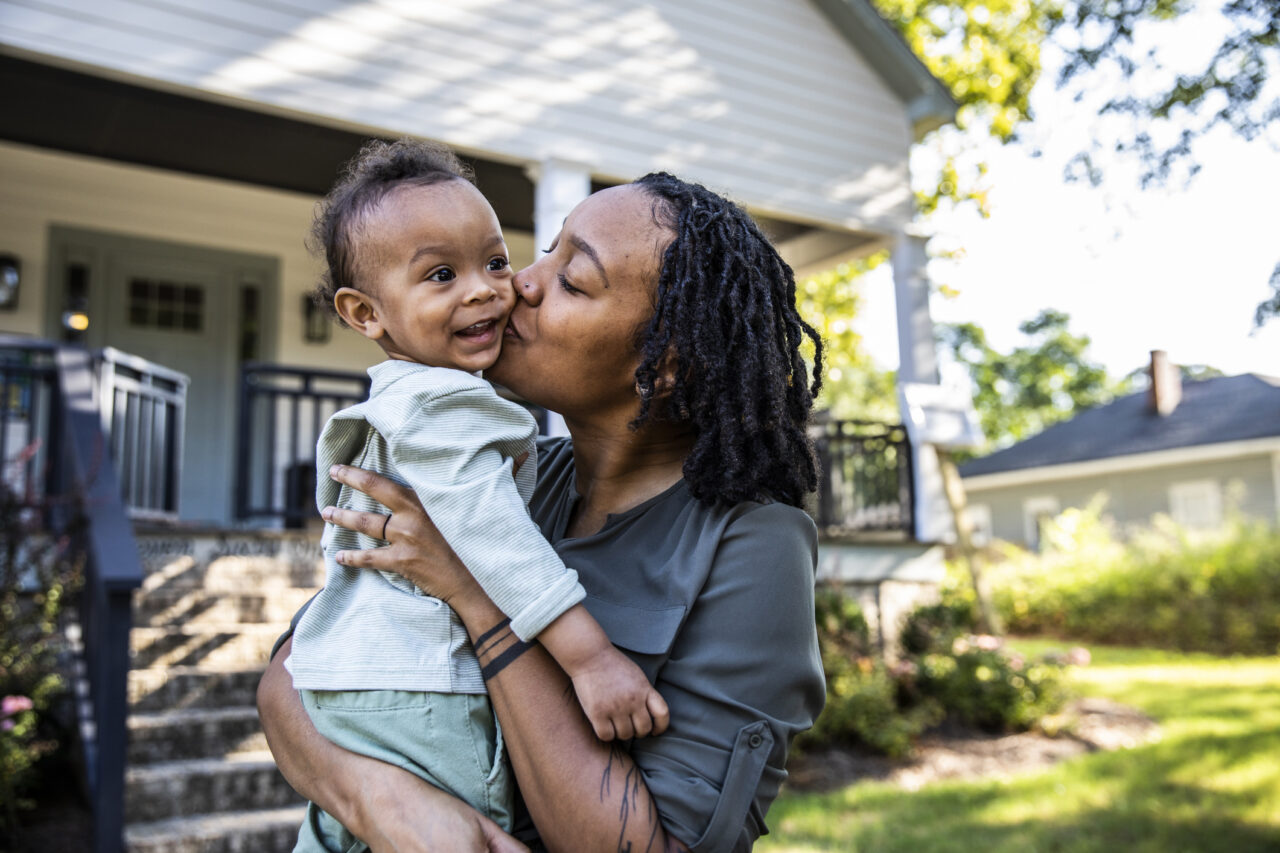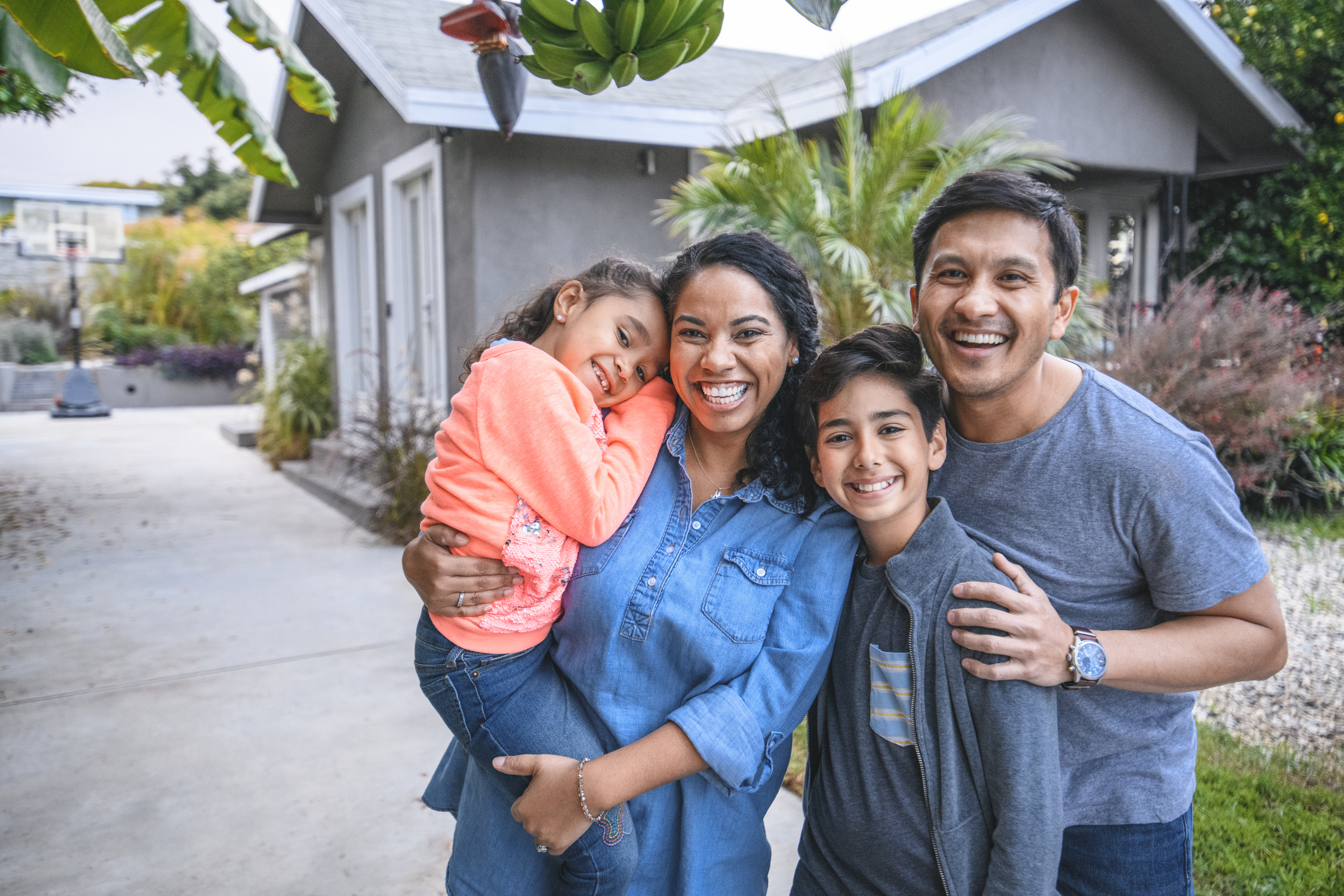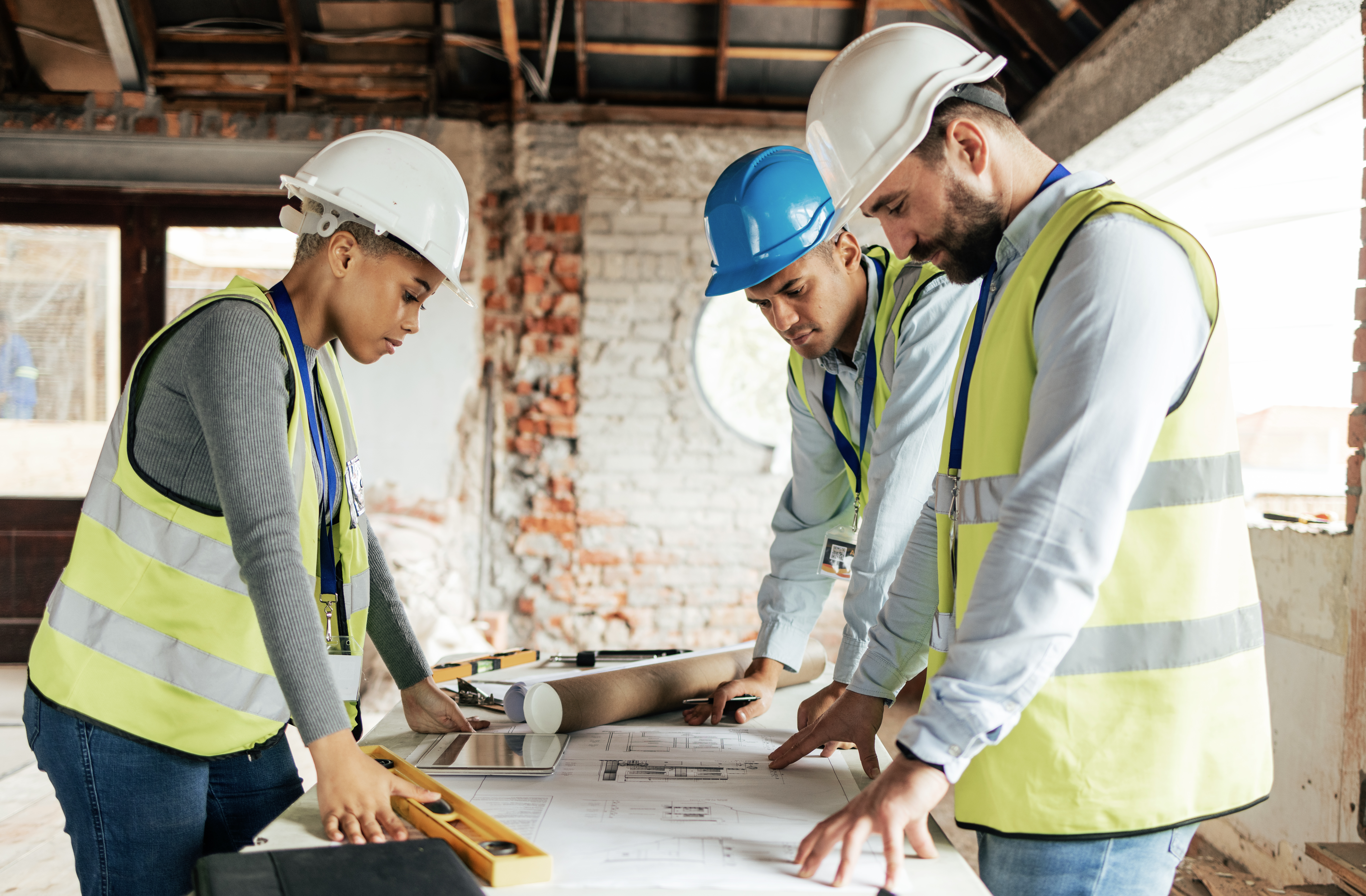This blog is the fourth part of a four-part series offering additional insights into racial wealth divide strategies.
Just as the racial wealth divide has grown over the past several decades, the gap between Black and Hispanic homeownership and white homeownership has widened. Indeed, the rate of Black homeownership has declined to levels comparable to those following the passage of the Fair Housing Act in 1968. According to the U.S. Census, in 2023, white homeownership rates were 73.8 percent, compared to only 49.8 percent and 45.9 percent for Hispanic and Black homeownership, respectively. Homeownership is largely viewed as the gateway to building wealth in the United States due to associated tax breaks, increased opportunities to build credit, and monthly payments that contribute to long-term generational stability.
Becoming a homeowner requires a level of savings and financial stability that is often out of reach for many Black and Hispanic families due to barriers, including historic and present-day discriminatory policies and practices, unequal access to credit, and shortages in the supply of affordable housing. And should they become homeowners, maintaining homeownership can be just as challenging. One of the largest barriers for historically marginalized communities to homeownership continues to be the lack of capital for down payment costs and costs associated with maintenance of the home. Black and Hispanic families often lack the accumulated wealth to make such payments, in contrast to white families, who are far more likely to receive inheritances or other family assistance to cover these costs.
Black homeowners, in particular, are less likely to sustain their homeownership. Of those who purchased their first home after age 44, 34 percent of Black households reverted to rental housing, while only 9 percent of white households did so.
Source: Urban Institute
While addressing the racial disparity in homeownership is not the only solution to narrowing the racial wealth divide, evidence has shown that homeownership is the greatest contributing factor to disparities in education, employment, income, and familial wealth to narrowing the gap. In fact, Black and Hispanic homeowners actually derive a higher share of their wealth from owned homes than white households in most cases.

Why Cities Should Consider Down Payment Assistance and Housing Rehabilitation Support
Homeownership as a strategy for narrowing the racial wealth gap should be viewed as a life cycle — first, with an emphasis on becoming a homeowner and second, on remaining one over time. Cities can contribute to this life cycle in each of these areas through down payment assistance programs and support for housing rehabilitation.
Down payment assistance programs customarily target first-time homebuyers and help with grants or low-interest loans that may be forgivable or repaid with low or no interest.
Research from the Joint Center for Housing Studies of Harvard University shows that an intervention of $25,000 in down payment assistance could potentially increase Black and Hispanic homeownership by more than 1.1 million households.
Source: Joint Center for Housing Studies of Harvard University
However, the research highlights that a significant portion of Black and Hispanic households still would lack sufficient income to support ongoing homeownership costs. This underscores the critical need for continued support beyond the initial home purchase.
An often-overlooked aspect of improving homeownership rates for Black and Hispanic communities is the need for ongoing assistance after purchasing a home, as home repairs and updates often pose considerable burdens. Both Black and Hispanic households report higher rates of repair needs – 39.6 percent and 39.9 percent, respectively, compared to 35.8 percent of the general population since they disproportionately live in moderate-age or older units and have limited emergency savings to cover these costs. Programs can cover a range of needs, including structural repairs, improvements to the building envelope, and enhancements in plumbing or electrical systems for maintaining a safe and healthy living environment.

Cities can utilize funding from various federal sources, including Community Development Block Grants (CDBG), HOME Investment Partnerships Program (HOME), as well as American Rescue Plan Act (ARPA) funds, to fund homeowner rehabilitation assistance programs. In addition, local housing trust funds and other revenue sources, such as philanthropic and employee-assisted housing programs, can be tapped to supplement federal funding.
Dallas, TX
In response to the Dallas City Council adopting a resolution for the development of a Racial Equity Plan, the Housing & Neighborhood Revitalization Department formulated a Housing Policy Equity analysis aimed at reducing disparities that disproportionately affect historically disadvantaged communities. The Dallas Homebuyer Assistance Program (DHAP) provides up to $50,000 in down payment and closing costs, with homeownership counseling serving as a crucial precursor. Notably, the department has allocated 50 percent of its housing rehabilitation budget to the Targeted Rehab Program (TRP), which focuses on rehabilitating predominantly Black and Latinx neighborhoods, marking a concerted effort to address historical inequities.
Milwaukee, WI
With Black households approximately facing a 50 percent lower likelihood of homeownership compared to white households, the City of Milwaukee has made addressing these disparities a top priority. Spearheaded by the Community Development Alliance (CDA), a comprehensive, affordable housing strategic plan was initiated in 2021, uniting the City of Milwaukee, community organizations, financial institutions, resident groups, and housing allies in a concerted effort to close racial disparities over the next 30 years. The city offers vital programs aimed at facilitating homeownership for low- to moderate-income residents: the Milwaukee Home Down Payment Assistance program provides grants of up to $5,000 (up to $7,000 for the city’s CDBG area boundary); the Strong Homes Loan Program extends loans of up to $25,000 to property owners for emergency and essential home repairs; and the Compliance Loan Program offers zero percent interest loans to homeowners for code violation repairs.
The lack of capital serves as a significant barrier for Black and Hispanic households in purchasing and maintaining a home over time. Alongside expanding financial options, it’s crucial for city leaders to be aware of and work to address other race-related barriers to homeownership, such as biased appraisal processes and regressive local property tax assessment. These practices not only hinder Black and Hispanic homeowners from building generational wealth but also limit their access to the full benefits of homeownership. When homeownership for Black and Hispanic communities is prioritized and preserved, their ability to build generational wealth and live in a healthy and stable home is also preserved, leading to stronger and more equitable cities.

Learn More
Join us from 2 PM to 3 PM (ET) Thursday, April 18, for the final webinar in the Racial Wealth Divide Strategy Series, “Housing and Homeownership,” where experts will showcase actions cities can take to increase access to affordable housing and pathways to homeownership for communities of color.
Dig Deeper
NLC’s guide, Municipal Strategies to Narrow the Racial Wealth Divide, offers municipalities a framework for addressing racial wealth disparities in their communities and presents five strategies for municipalities to consider as they seek to tackle this pervasive issue: entrepreneurship and small business development; workforce development; income, savings, and debt reduction; and municipal administration and operations.
















